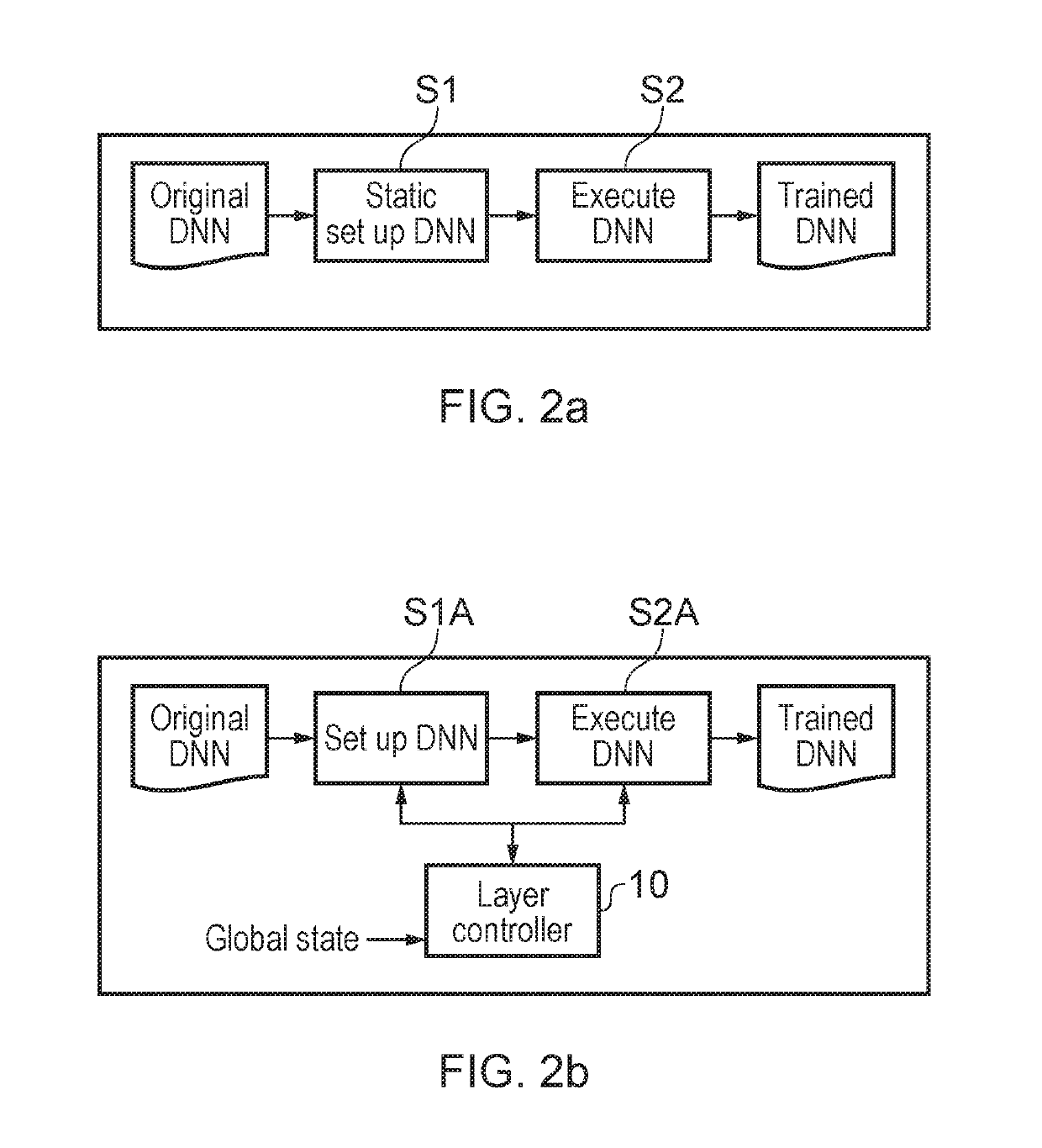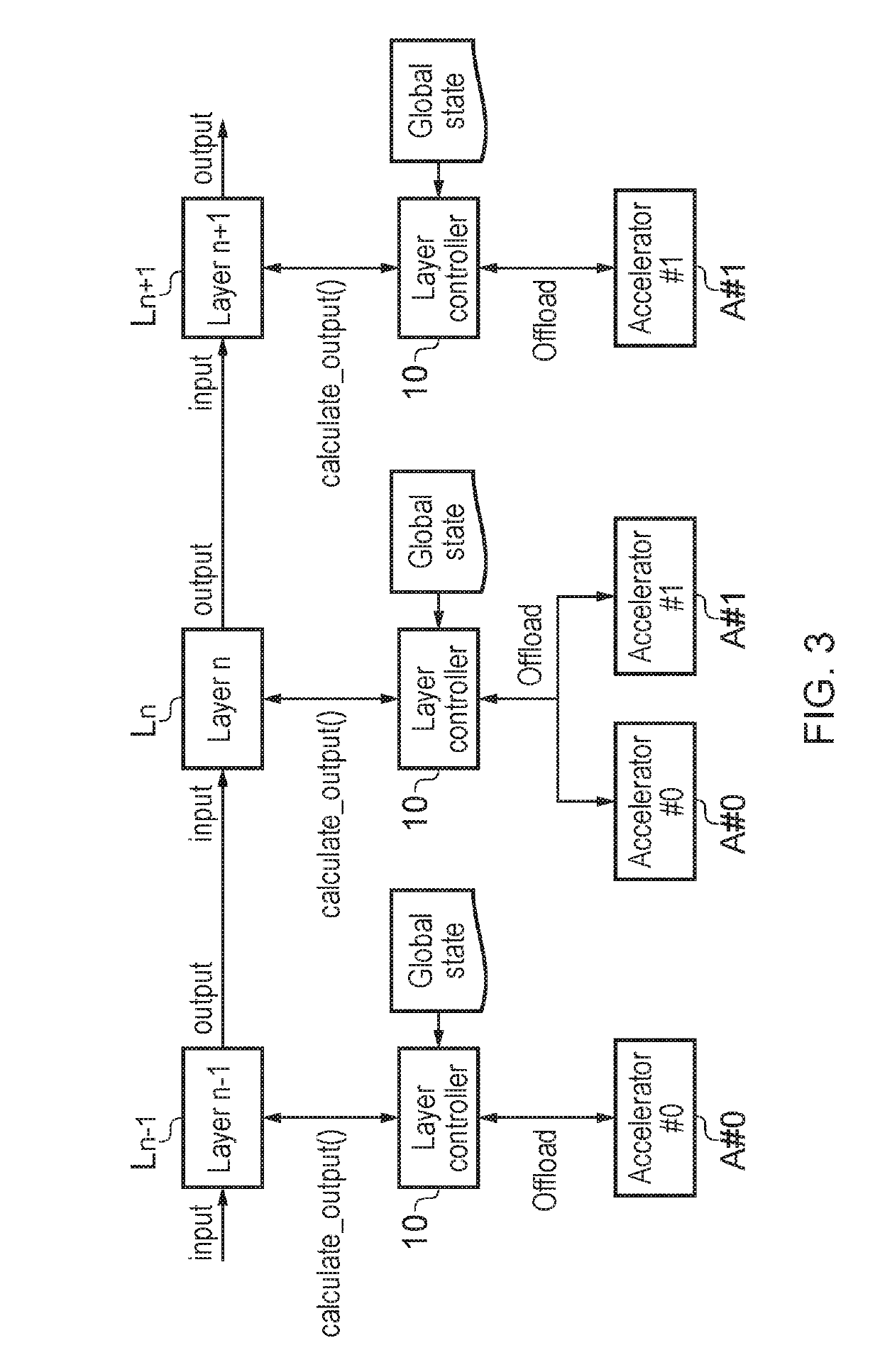Methods and apparatus for model parallelism in artificial neural networks
a technology of artificial neural networks and models, applied in biological models, multi-programming arrangements, instruments, etc., can solve the problems of memory restriction, accelerator memory restriction, and extremely computationally intensive training process of dnns, and achieve the effect of improving response, simple and efficient setup and execution of ann using memory and processing capabilities of multiple hardware resources
- Summary
- Abstract
- Description
- Claims
- Application Information
AI Technical Summary
Benefits of technology
Problems solved by technology
Method used
Image
Examples
Embodiment Construction
[0052]Reference will now be made in detail to the present embodiments of the present invention, examples of which are illustrated in the accompanying drawings, wherein like reference numerals refer to the like elements throughout. The embodiments are described below to explain the present invention by referring to the figures. It will nevertheless be understood that no limitation of the scope of the invention is thereby intended, such alterations and further modifications in the illustrated device, and such further applications of the principles of the invention as illustrated therein being contemplated as would normally occur to one skilled in the art to which the invention relates.
[0053]The flowchart of FIG. 1a shows a method in accordance with an embodiment which comprises, in operation S100, automatically controlling allocation, to memories of available hardware resources, of parameters defining computational operations required to calculate an output of at least one layer of ne...
PUM
 Login to View More
Login to View More Abstract
Description
Claims
Application Information
 Login to View More
Login to View More - R&D
- Intellectual Property
- Life Sciences
- Materials
- Tech Scout
- Unparalleled Data Quality
- Higher Quality Content
- 60% Fewer Hallucinations
Browse by: Latest US Patents, China's latest patents, Technical Efficacy Thesaurus, Application Domain, Technology Topic, Popular Technical Reports.
© 2025 PatSnap. All rights reserved.Legal|Privacy policy|Modern Slavery Act Transparency Statement|Sitemap|About US| Contact US: help@patsnap.com



